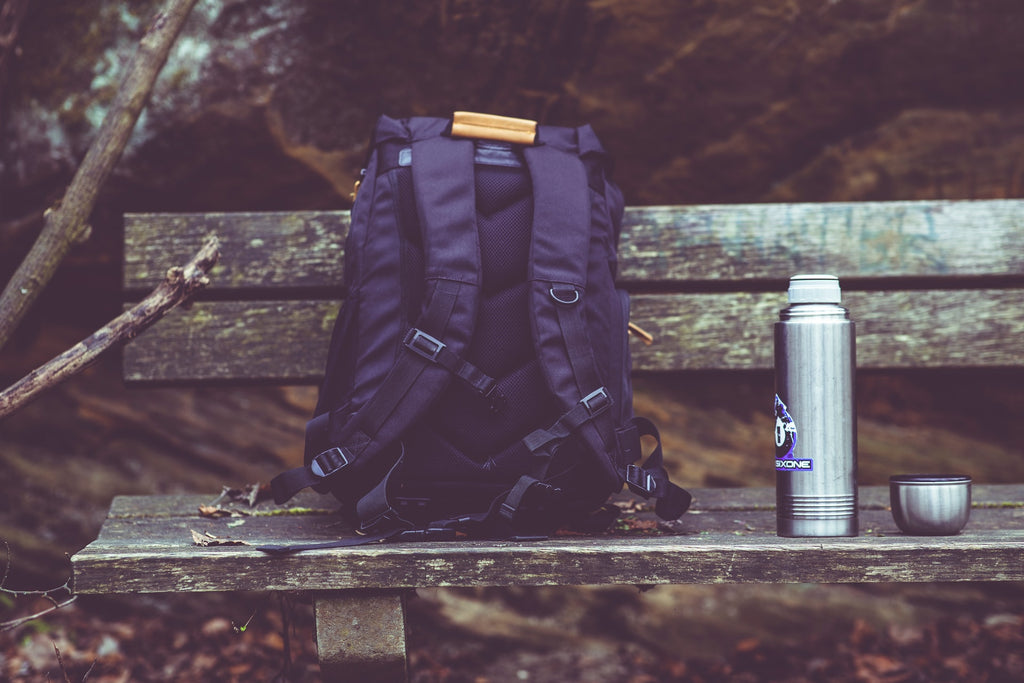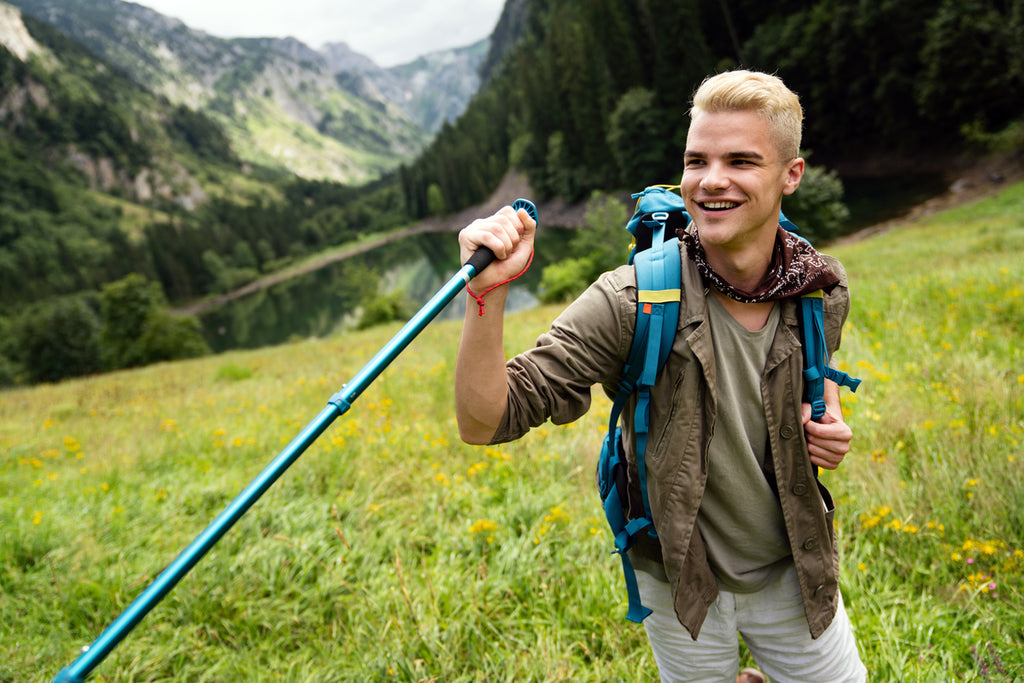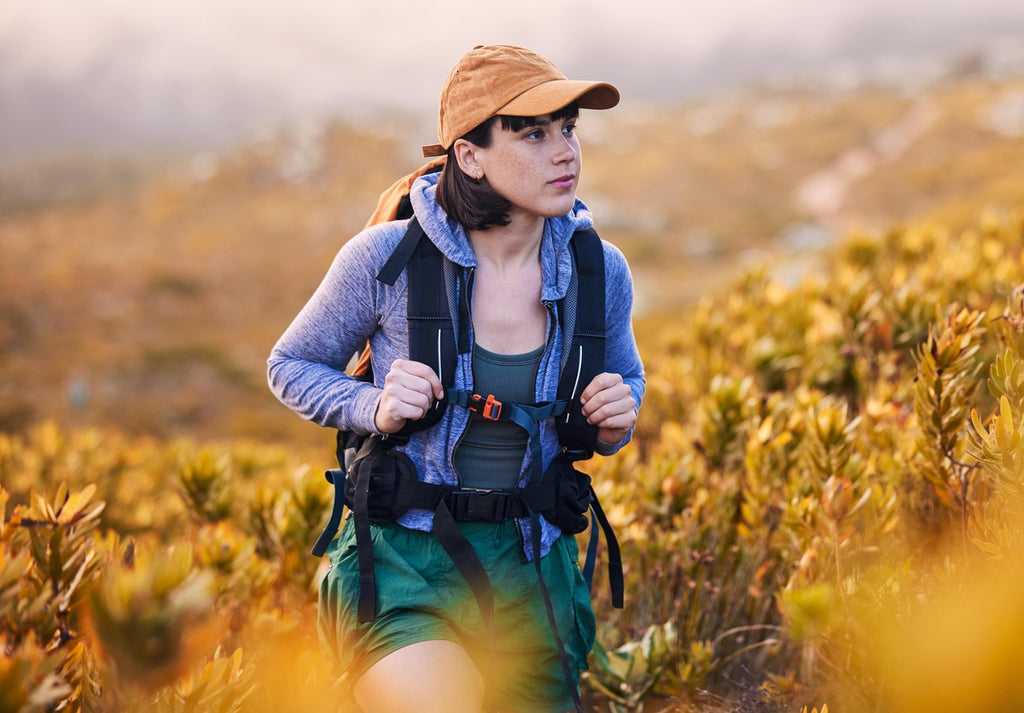
Backpack Straps 101: How to Loosen or Tighten for Maximum Comfort
Reading Time: about
Hey there, fellow adventurers and wanderlusters! 🎒
Ever struggled with an achy back halfway through a hike? Or maybe you've felt like a pack mule during your daily commute? Trust me, I've been there, too.
It's not the backpack; it's how you wear it. Yeah, you heard me right! Those straps are more than just fabric; they're the key to a pain-free back and a way better adventure.
Stick with me, and we'll dive into the ins and outs of adjusting your backpack straps for literally any situation.
I. The Anatomy of Backpack Straps
Ah, backpack straps. They're the unsung heroes of our outdoor adventures, commutes, and travel expeditions. Let's get into the nitty-gritty of these essential components that could make or break your back—literally!
1. Different Types of Straps
Have you ever worn a backpack and felt like a ton of bricks was weighing you down? The culprit could be the type of straps you're sporting. There are mainly three types of straps you should know about:
-
Padded vs. Non-padded: Padded straps are your back's best friends, especially when you're carrying a load. They help distribute weight and offer comfort. On the flip side, non-padded straps are lighter and are generally found in daypacks designed for light carrying.
-
Sternum Straps: You might think these are just another fancy addition, but they’re a godsend when you’re walking long distances. Sternum straps help keep the shoulder straps in place, so you don't look like a wobbly penguin while hiking.
-
Hip Belts: Forget love handles; these belts handle your pack’s love for gravity. They distribute the weight from your shoulders to your hips, making your load feel lighter.
Let me tell you a quick story. I once hiked a challenging trail with a backpack that lacked hip belts. Bad idea. By the end of the hike, my shoulders were practically pleading for mercy.

2. Material and Durability
Materials matter, folks! Just like you wouldn't wear a wool sweater in a desert, your backpack straps need to be made of the right stuff. Here’s the lowdown:
-
Nylon: Lightweight and robust, nylon straps are excellent for most activities. But they can be abrasive if not padded well.
-
Polyester: Another popular choice, it's not as strong as nylon but does the job for light-to-medium loads.
-
Leather: Ah, the classic. While they’re luxurious and long-lasting, leather straps can be heavy and require more maintenance.
Now, let's talk stitching and fasteners. The last thing you want is a strap breaking mid-adventure. Strong stitching and durable fasteners are non-negotiable. I've seen straps tear from shoddy stitching, and it's not a pretty sight.
📷 Credit: Set To Hike's Youtube Channel
3. How Straps Distribute Weight
Ever wondered why you sometimes feel the weight of the world on your shoulders while wearing a backpack? Here's a little science lesson. Weight distribution is key, and it's all about how straps are designed.
-
Strap Width and Padding: Wide, padded straps distribute weight across a larger surface area. This lessens the pressure on any one spot, allowing you to carry more without straining.
-
Scientific Insight: The ideal distribution of backpack weight is an art backed by science. The concept is simple: spread the weight uniformly across your back and shoulders, and you're golden. But mess this up, and hello backache!
4. Innovations in Strap Design
Strap technology has come a long way. We're not just talking about your run-of-the-mill fasteners anymore.
-
Load Lifters: These are tiny straps located just below the shoulder area that allow you to pull the backpack closer to your body. It's like hugging your backpack, and who wouldn't want that?
-
Tension Straps: Also known as compression straps, these help keep your bag's shape, reduce volume, and thus ease the load.
-
Quick-Release Mechanisms: Need to get your backpack off ASAP? These mechanisms are your saviors, allowing for a quick and smooth removal.
So, there you have it—the A to Z, or should I say the top to bottom, of backpack straps. Next time you're in the market for a new pack or adjusting your current one, you'll know exactly what you're looking at and what you need. Your back will thank you, and honestly, so will your future self in the midst of an epic adventure.

II. Why Proper Strap Adjustment is Crucial
You might be asking, "Why is this so important?" Strap in (pun intended), because we're about to get into the real meat and potatoes of why proper strap adjustment is a game-changer.
1. Impact on Health and Posture
Ever ended a day of hiking and felt like Quasimodo? Yeah, your straps could be to blame.
-
Consequences on Your Spine and Posture: Ill-fitted straps can lead to uneven weight distribution, which in turn stresses your spine. Over time, this can affect your posture and lead to back problems. Nobody wants to sound like a bowl of Rice Krispies with all those snap, crackle, and pops in the back!
-
Medical Expert Opinions: Doctors and chiropractors agree that the wrong kind of weight distribution can be harmful in the long run. According to medical experts, a backpack's weight should not exceed 10-15% of your body weight, and proper strap adjustment is key to maintaining that balance.
2. Efficiency in Outdoor Activities
Properly adjusted straps aren't just for comfort; they can genuinely improve your outdoor performance.
-
Improving Performance: Whether it's hiking, camping, or mountaineering, well-adjusted straps keep your pack secure, allowing for better balance and movement. Imagine trying to climb a steep hill with a wobbly pack—sounds like a recipe for disaster, right?
-
Energy Conservation: Believe it or not, a well-fitted backpack makes you use less energy. Your muscles work more efficiently when the weight is evenly distributed, leaving you with more stamina for your adventures.
📷 Credit: REI's Youtube Channel
3. Enhancing Comfort for Extended Use
If you’re out on a long trek or navigating airport terminals, comfort becomes a primary concern.
-
Benefits of Proper Strap Adjustment: A well-fitted backpack feels like an extension of yourself. You're less likely to experience chafing, soreness, or the dreaded back sweat that comes with ill-fitted straps.
-
Adjusting On-the-Fly: Sometimes you'll need to adjust straps multiple times during extended use. Knowing how to do this quickly can make your experience much more comfortable.
4. Straps and Safety
Last but not least, let’s talk safety. Because honestly, what’s the point of an adventure if you’re not going to make it back in one piece?
-
Loose Straps and Hazards: A backpack that's too loose can easily get caught on branches, door handles, or even other people. There's nothing like a quick yank back to reality to remind you of the importance of snug straps.
-
Tight Straps and Risks: Overly tight straps are also a no-go. They can restrict movement, making it hard to react quickly in case of a slip or fall.
Proper strap adjustment isn’t just about feeling comfy; it’s about your health, performance, and safety. Get those straps right, and you're already halfway to having an awesome time out there!
III. How to Loosen and Tighten Backpack Straps?
So you’ve got your new backpack, and it’s loaded up and ready to go. But wait, what's this? Your straps are either choking you or hanging loose like a forgotten New Year's resolution. No worries! We've all been there. Here's how to get those straps perfectly adjusted.
1 The Basics of Loosening Straps
First thing's first, let's get you some breathing room.
-
Identify the Buckles: Look for the main adjustment buckles, typically located at the bottom of your shoulder straps.
-
Hold and Slide: Grab the loose end of the strap (often comes with a pull-tab for easier handling) and gently slide it through the buckle, making sure you hold the buckle in place.
-
Test and Adjust: Once loosened, put the backpack on to see if it feels right. The straps should sit comfortably on your shoulders without sagging too much.
Ever had a moment on a hot day when you feel like your backpack is part of your skin? Loosening those straps can make a world of difference!

2. The Basics of Tightening Straps
Now, how about when you need things a bit more snug? You don't want your pack bouncing around when you're in motion, trust me.
-
Hold the Buckle: This time, hold the buckle and pull the strap upwards. Make sure you’re pulling evenly to avoid any twists.
-
Feel the Tension: The straps should feel snug but not restrictive. You don't want to cut off circulation—that's a trip ruiner for sure.
-
Double-check: Always check the fit by moving around a little. If the backpack stays in place and you can breathe easily, you're good to go!
3. Pro Tips for Quick Adjustments
But what about those moments when you're on the move and need to adjust on the fly? Here are some ninja moves for you.
-
One-Handed Loosen: Hold the base of the buckle with one hand while pulling the strap away from your body with the other. It’s a bit of a wrist workout but super helpful when you’re in a rush.
-
Quick Tighten: Use your body weight. Lean forward and allow the weight of the backpack to pull the straps. Then, just pull down on the loose ends to tighten.
-
Strap Locks: Some modern backpacks come with strap locks for instant adjustments. These can be real lifesavers, but it's best to practice using them before you hit the trail.
4. Adjusting Other Types of Straps
Don't forget, your backpack might have more than just shoulder straps.
-
Sternum Straps: Locate the side buckles and adjust them just like you would with shoulder straps. The strap should sit flat across your chest without causing any discomfort.
-
Hip Belts: These are adjusted similarly to the main straps. The buckle is usually in the front, and you’ll want to pull until the belt feels snug but not too tight.
-
Tension Straps: These are generally found on the sides of the backpack and can be loosened or tightened depending on how much you're carrying. It's all about finding that perfect balance.
You're now a certified strap adjuster, capable of finding that perfect blend of comfort and functionality A well-adjusted backpack can make a world of difference, whether you’re climbing mountains or just tackling the urban jungle.
📷 Credit: Trekitt's Youtube Channel
Common Mistakes and How to Avoid Them
You might think, "Hey, how hard can this be? They're just straps!" Well, just like in dating and cooking pasta, the simplest things can get complicated quickly. So let's go over some common missteps people make when adjusting their backpack straps and how you can steer clear of them.
1. Over-tightening and Its Consequences
Whoa, there, Hercules! Tightening your straps with all your might isn't always the best idea.
-
Why It's a Problem: Over-tightening can lead to restricted blood flow, causing discomfort and potential health risks. Have you ever removed your backpack and found marks left by the straps? Yeah, not a good sign.
-
How to Solve It: It's simple: the straps should be snug but not tight. Make sure you can slip two fingers between the strap and your shoulder. If you can't, it's time to loosen up a bit.
2. Ignoring the Importance of Even Weight Distribution
If your backpack feels like it's playing tug-of-war with your back, you might need to reassess how you're loading it.
-
Problems Caused: Uneven weight distribution can cause you to lean to one side, affecting your balance and posture. Not only does this make you look like you're doing some weird interpretive dance, but it also puts unnecessary stress on your back and joints.
-
Solutions: Make sure your heaviest items are centered and close to your back. Then adjust each strap incrementally to ensure even tension on both sides. You'll know it's right when your backpack feels like it's hugging you, not pulling you in different directions.
3 Overlooking Damaged or Worn-Out Straps
Your straps have been with you through thick and thin, but nothing lasts forever.
-
Risks: Worn-out straps can suddenly snap, and nobody wants their underwear and camping gear scattered on the trail. More importantly, a failing strap can put you at risk if you're in a dangerous area or engaged in extreme activities.
-
How to Check for Wear and Tear: Take time to regularly inspect your straps for frayed stitching, rips, or other damage. If you find any, it's time for a replacement. Don't think of it as saying goodbye, but as upgrading to a better experience.
4 Neglecting Periodic Adjustments
You've set your straps, and they're perfect. End of story, right? Not quite.
-
Why It's Important: As you go through your journey, the weight in your backpack may shift, or you might put on/take off layers of clothing. Each change can affect how your backpack fits.
-
Especially for Long Journeys: If you're out for an extended period, you'll likely need to make frequent adjustments. Make it a habit to check your straps every time you take a break.
Your relationship with your backpack is like any good relationship: it needs regular check-ins and adjustments to keep things comfortable and harmonious. Steer clear of these common mistakes, and you'll be well on your way to backpacking bliss.
Conclusion
Alright, pals, that's a wrap on our backpack strap masterclass! From uphill hikes to daily commutes, we've covered how a simple strap tweak can make a world of difference.
So the next time you're about to brave the great outdoors—or just the subway—remember these strap hacks. Your back will thank you, I promise! Got any strap tricks up your sleeve? Share them in the comments below. Happy trails! 🌲🏞️
FAQ
How do I know if my backpack straps are too tight?
If your shoulders feel pinched or you're experiencing numbness or tingling in your arms, your straps might be too tight. Check out our section on 'Over-tightening and Its Consequences' for a detailed guide.
Can I adjust the straps while wearing the backpack?
Absolutely! We've got some killer tips in our 'Pro Tips for Quick Adjustments' section that'll help you fine-tune your fit without even taking off your pack.
Do I need to adjust the straps differently for hiking?
Yes, hiking often requires specialized strap adjustments for weight distribution, especially when tackling different terrains. Dive into our 'Strap Adjustment for Hiking and Trekking' for expert insights.
What materials are backpack straps usually made of?
Common materials include nylon, polyester, and sometimes leather. Each has its pros and cons, which we've broken down for you in the 'Material and Durability' section.
Is the sternum strap important?
Very! A sternum strap helps distribute weight across your chest, making your load easier to carry. For more info, take a look at our 'Different Types of Straps' discussion.
What's the deal with 'Load Lifters'?
Load lifters are small straps located just below the top of the shoulder straps. They help pull the weight of the backpack closer to your body. Read more in the 'Innovations in Strap Design' part of our blog.
How often should I check for strap wear and tear?
Regular checks are advisable, especially before a big trip. Don't miss our 'Overlooking Damaged or Worn-Out Straps' section to find out what to look for.
Are there any health risks with improper strap adjustment?
Indeed, poorly adjusted straps can lead to posture issues and back pain. Our section on 'Impact on Health and Posture' goes in-depth on this topic.
Do straps need to be adjusted seasonally?
Yes, winter coats or summer tank tops can affect how your backpack fits. See our 'Seasonal Adjustments: Summer vs Winter' for tips.
Can poorly adjusted straps be a safety hazard?
You bet! Loose or uneven straps can shift your balance and pose risks during activities like biking or hiking. Dive into our 'Straps and Safety' section for all the safety guidelines you need to know.
📫 Related Blog Posts:
📌 Best Laptop Backpacks of 2024 | Ultimate Guide for Work, Travel & School
📌 When Were Backpacks Invented? Unpacking History
📌 Best Travel Backpacks: How to Perfectly Choose Yours? [Complete Guide]
📌 Best Urban Backpacks - Ultimate Guide for the Perfect City Backpack
📌 How to Pack a Backpack? A Trailblazer's Guide
📌 The Ultimate Guide to Attaching a Sleeping Bag to Your Backpack
📌 Travel Light, Travel Right: The Ultimate 2-Week Packing Guide
📌 Zipper Troubles? Learn How to Fix a Zipper on a Backpack
📌 From Chaos to Order: Your Ultimate Guide on How to Store Backpacks
📌 From Sore to Soar: Measure Your Torso for the Ultimate Backpack Fit

















Leave a comment